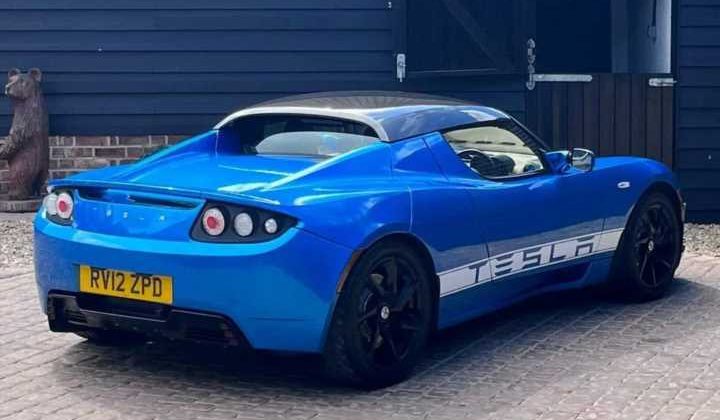Can an EV ever become a classic car? Values in Tesla Roadsters suggest they can…
By Cam Tait / Friday, 9 September 2022 / Loading comments
It was easy to dismiss the Tesla Roadster when it silently snuck up on us in 2008. There has always been a steady stream of home-built sports and supercars, particularly in the noughties. Some of these went on to great success, like the Noble M12, while many others boasted of space-age materials and high-power engines only to go out of business before producing a prototype.
At a glance, the Tesla Roadster fell into the second category. Here we had a Lotus Elise-based sports car powered exclusively by electricity. Not only did the idea of a silent performance car make zero sense at the time, but electric cars had a reputation of being completely rubbish. Slow, heavy, cheap-looking and tragically bad at holding a charge, EVs were miles behind their piston-powered counterparts. A game changer was needed for the battery-powered concept to make its way into the mainstream – and, partly for what followed it, the Tesla Roadster can lay claim to being that car.
It addressed two major criticisms levied against electric cars at the time. Featuring a rear-mounted, three-phase induction electric motor developing 252hp and 200lf ft of torque in standard form, the Roadster’s numbers were in line with what we’d come to expect from a small, mid-engine sports car like the Elise it’s based on. But the crucial difference, of course, was the now familiar near-instant torque, leading to frankly ridiculous acceleration figures. Tesla claimed the Roadster could dispatch a 0-60mph run in 3.7 seconds – only a couple of tenths shy of a Porsche Carrera GT.
So that was the performance taken care of, but what of the range? Well, let’s take a Reva G-Wiz an example of a mid-noughties electric car for context. It could muster a claimed 50 miles on a full charge, which is fine for a dash around London but useless after a solid hour-and-a-bit’s worth of driving. The Roadster, meanwhile, packed a 53kWh battery capable of powering the two-seater for up to 244 miles (according to America’s EPA rating). Yes, they’re two very different cars, but the electric car market was almost non-existent at the time and the comparison says much about how far Tesla had moved the game along with its first go.
Remarkably, it sold in decent numbers, too. It’s estimated some 2,450 Roadsters were produced, most of which found their way onto the driveways of tech entrepreneurs in California though a small number were sold in the UK – and in right-hand drive. Needless to say, Tesla’s follow-up to the Roadster, the Model S, proved EVs could co-exist with cars powered by dinosaur juice (if you went to the trouble of installing your own infrastructure). And just like the original iPhone (go look them up on eBay), Roadsters have become somewhat of a collector’s item and values are soaring. So try not to wince when you see the price tag of this 2012 example. It’s £225,000.
For an Elise-based EV? Really? Well, clearly the vendor is convinced that the model’s place in history is already assured, and with it being one of the last examples produced, it ought to be a desirable car for the Tesla diehard. It’s clearly been taken care of by its previous and only owner, too, with the (surprisingly posh) leather seats in mint condition and the odometer reading just 4,750 miles. Moreover, a quick search reveals there are some owners in the US trying to get over a million dollars for theirs. Which sounds preposterous (it is preposterous), but it gets you thinking, right?
SPECIFICATION | TESLA ROADSTER
Engine: Single electric motor
Transmission: Single-speed automatic, rear-wheel drive
Power (hp): 252@0rpm
Torque (lb ft): 200@0rpm
MPG: N/A
CO2: 0g/km (local emissions)
Year registered: 2012
Recorded mileage: 4,750
Price new: £88,000
Yours for: £225,000
Source: Read Full Article
